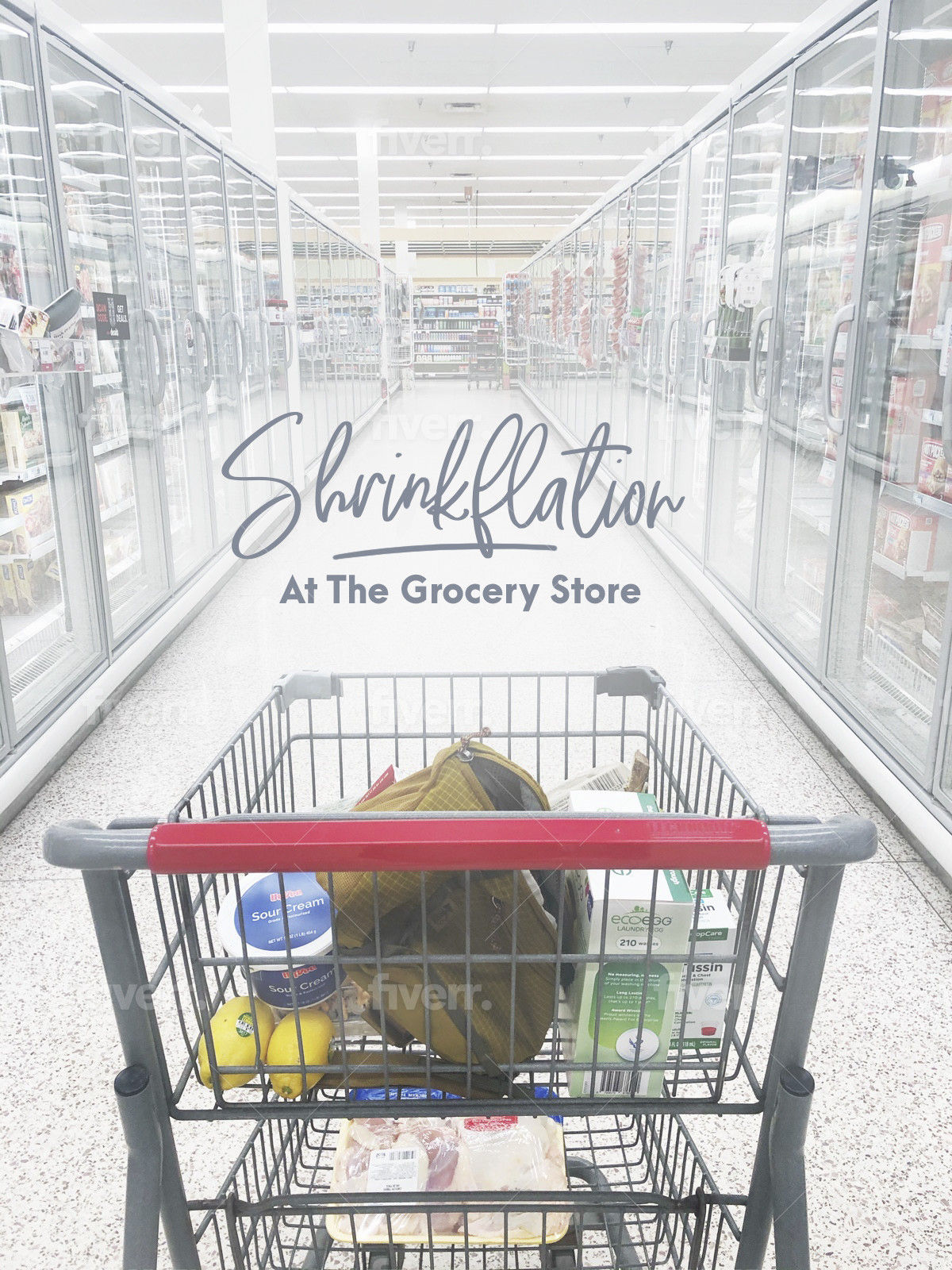Why Shrinkflation Matters In The Grocery Store
You’ve probably heard of shrinkflation but maybe don’t know much about it. As a consumer, it’s an important topic that directly affects you. Read on for a primer on shrinkflation as it pertains to grocery prices – and what to do about it.

Something has changed at the grocery store. Prices have gone up, certainly. But now you have started to notice that some of your go-to products seem smaller.
It’s not your imagination. Shrinkflation, or package downsizing, is happening on everything from cereal to pet food to aspirin to toilet paper.
Inflation vs. Shrinkflation
Let’s be clear: Inflation and shrinkflation are both affecting your pocketbook. But they are not the same:
- Inflation: The decrease in purchasing power of currency, which consumers see as an increase in prices.
- Example: The last time I bought mushrooms at my local grocery store, I paid $1.99 for an 8-ounce package. Yesterday, I paid $2.69 for the same size package.
- Shrinkflation: A decrease in package sizing or quantity, while prices stay the same or increase.
- Example: In 2014, Coca Cola reduced its largest bottle size of soda from 2 liters to 1.75 liters, while the price stayed the same.
How To Spot Shrinkflation
Shawna Newman, editor-in-chief at Money Misfit, has an MBA in finance and offers this take on shrinkflation in the grocery store:
“Shrinkflation is one of those sneaky budget saboteurs because you usually don’t notice much difference in your weekly grocery bill. You buy the same stuff for your family, but you end up with less food on the table.
The reason this is so sneaky is that the package often touts “new design” or something similar instead of being transparent about the fact that there are 30 fewer sheets on your roll of Charmin or five fewer chips in your bag of Doritos. In fact, my favorite tortilla chips, Late July’s Sea Salt + Lime chips, recently showed up on shelves with a “new design” label without mentioning the bag dropped from 11 oz. (312g) to 10.1 oz. (286g).
Brands see shrinkflation as a way to raise prices without raising the hackles of consumers. But as a consumer, this is really frustrating because it is essentially a price increase because you’re paying more for less food. This is why it is important to know the per-unit price of the food you buy. Often grocery store shelves have cost-per-ounce or other units listed on the price tag to help make this math effortless. If you keep a price book, then you can track the per-unit cost of what you buy each week. This enables you to notice changes and identify the best deals and purchases for your family.”
Shrinkflation Isn’t Going Anywhere
Adrian Prisca, who runs InvestSomeMoney.com, adds:
“Shrinkflation is not something new and unfortunately, with the rising costs of almost everything, from the pump to the grocery store, it’s going to happen more and more in the future. It’s a trick a lot of brands use to cope with the higher costs of inflation, shortages and transportation, without raising prices. Sometimes they do this to maximize profits too, but that’s a different story. In order to sell you the same products for exactly the same price they end up downsizing, because they know most people don’t really examine the net weight or the size of the containers. That’s how you pay the same price for less product and even though you might not notice it initially, it’s a move that can hit your wallet and even your diet pretty hard.
In these cases you need to examine the net weight of every single product carefully and if your favorite brand downsizes to keep the same price you could either look for competitors that haven’t done so or try to find better deals for bigger products.”
What To Do About Shrinkflation
As a consumer, what can you do about shrinkflation?
There are a couple of things you can do to specifically reduce the potential financial impact of shrinkflation:
- Track price per unit or ounce: Many grocery stores list price per unit (or price per ounce) on the label where the price is listed. By tracking this, you will be aware of any price increase. You can also use it to find the most budget-friendly option on the shelf.
- Look for a cheaper alternative: If your go-to brand has shrunk its packaging, consider purchasing a different brand or a generic version of the product.
But your main defense in this time of high inflation, supply chain issues, and soaring grocery prices is to immediately implement tried-and-true methods of saving money at the supermarket.
Further Reading
Interested in learning more about about this topic and why shrinkflation matters for grocery shoppers:
- Reddit’s Shrinkflation page, with real-life examples of shrinkflation
- Mouse Print, which examines the fine print on product packaging and contracts
- How to feed a family of 4 for $100 a week
- 7-Day Meal Plan For Less Than $100
- 23 ways to save money on groceries in 2022 (and beyond)


Interesting read and so true. I purchased a box of Banquet chicken not long ago. $8.00+, four pieces.